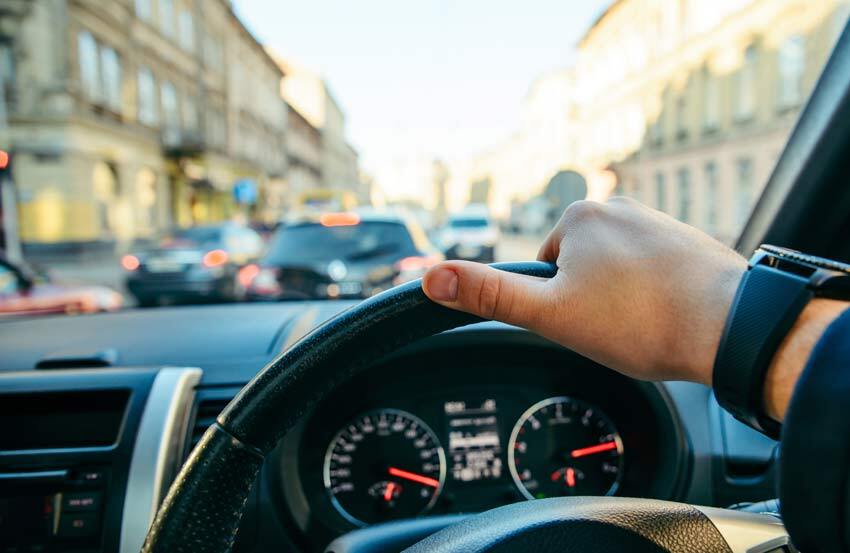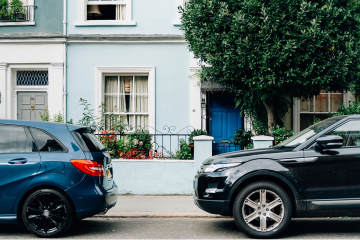Ever wondered how your insurance provider works out the cost of your car insurance?
Getting insurance is a bit like a risk assessment. Insurers weigh up how likely you are to get into an accident or make a claim. And if you're deemed high risk, you might have to pay higher premiums.
But what makes someone a high risk driver?
Read on and we'll take you through the criteria, and how you can lower your risk.

Can I still get car insurance if I'm considered high risk?
Yes, but it's likely to be more expensive because of how car insurance is calculated.
If insurers think you're more likely to make a claim, your premium will be higher.
Why might I be seen as a high risk driver?
A high risk driver is someone who's more likely to claim, or make an expensive claim. There are a number of factors which come into play when talking about high risk drivers.
We've used our own data from our car insurance price index to give you an idea of how these risk factors can affect your premium.
Your age
Your age can play a part in how much you pay for car insurance.
Younger drivers are considered high risk because they have less driving experience. Car insurance for a 17 year old who has just passed their test costs £2,404* on average. By the age of 30 this average has more than halved, with drivers paying around £1,145*.
Insurance prices tend to continue to drop until you hit your mid-70s, where they begin to rise again.
The average cost for a 70-75 year old driver is £383*, but climbs to £445* for drivers aged 76-80. And from there, prices typically begin to climb further.
Your gender
Your gender also plays a role in how much you're likely to pay. Women tend to pay less for car insurance, as men generally make more claims.
Car insurance companies aren't allowed to use gender as a factor when working out insurance prices. This is due to the Gender Directive passed by the European Court of Justice in December 2012. But statistically, women pay less on average.
The average cost of car insurance for women is £732*, whilst the average cost for men is £894*.
The licence you hold
The type of licence you have will also play a role in how much you pay.
Manual licences tend to lead to lower premiums, even if you're insuring an automatic with one. This is likely due to automatic-only drivers being seen as less skilled than manual ones.
Our data shows that drivers with a manual licence pay £922 on average to insure an automatic. Drivers with an automatic-only licence pay £1,650*.
Your claims history
The amount you've claimed will also affect what you pay.
Being involved in a number of accidents will make your insurance go up. This is because insurers will see you as being more likely to make a claim. Even if the accidents weren't your fault, your insurance price could increase.
Your driving convictions history
You're likely to be considered high risk if you have driving convictions.
These can include:
- Drink driving
- Drug driving
- Driving without insurance
- Speeding
You could also be connsidered high risk if you accrue a 'totting up' ban. This is a conviction that occurs when a driver gets 12 or more penalty points on their license within a 3 year period.
It isn't surprising that car insurance for convicted drivers is more expensive. The more points you have on your license, the more you can expect to pay.
According to our data, the most common driving convictions are speeding and driving without insurance.
If you're convicted of driving without insurance you could be looking to pay around £2,410 for a policy.
An SP40 refers to speeding in a passenger vehicle, such as a car or motorbike. The average price of insurance after this conviction is £2,410*.
An SP50 also refers to speeding, but it's specifically when a driver is found guilty of speeding on a motorway. The average price of insurance after this driving conviction is £985*.
The car you drive
The car you drive will also affect your premium. Car insurance groups categorise vehicles based on their risk level and cost to insure.
They're categorised into insurance groups 1-50, and this number affects how much you'll pay. These insurance groups are based on a number of factors.
These include:
- New car value
- Performance
- Time and cost to repair
- Security
- Safety features
Generally the higher your car's group, the more you pay to insure it. But there are exceptions. Our data shows that the average price for groups 1-5 is higher than those further up the scale.
For a group 1 car you'll be looking to pay around £1,178*. But if your car is in group 20, you'll be looking at a cost of £753*.
To find out what group your car is in, check out our car insurance group checker.
Fuel type
Petrol and diesel cars are typically cheaper to insure than hybrid or electric cars as they tend to be older, cheaper, and easier to repair.
They cost £638* on average to insure, compared to £686* for a hybrid.
Electric cars are pricier again for all the same reasons, though the cost to insure them is likely to come down as traditionally fuelled cars are phased out. Our data shows that electric car insurance costs an average of £788*.
Where you live
The area you live will also factor into the price you pay. Inner city areas can be more costly due to higher risks of accidents and higher crime rates.
Students might notice this hike in prices even more while they're living away. The most expensive university for car insurance is UCL which has an average of £1,731*.
The cheapest uni, by comparison, is Lancaster, where the average currently stands at £611*.
Your occupation
The type of job you do can also affect your car insurance.
If you're retired you may enjoy very low insurance costs because you're not battling the daily commute.
Paramedics and Police Officers are also more likely to have cheaper insurance. This may be due to the fact that drivers in emergency service roles are more likely to undergo extra driving training for their jobs. So they might be seen as less risky to insure. Police officers pay £662* on average for their cover, with paramedics paying £535*.
On the flip side, self-employed people are often seen as higher risk by insurers. Beauticians, scaffolders, and construction workers are highly likely to travel to different clients for work, and may spend more time behind the wheel as a result.
This makes them appear higher risk, and they pay more for their cover as a result. In fact, our data shows beuty therapists pay £939* for their insurance - £105* more than the average of £834*.
The way you use your car
Is your car mainly used for your daily commute, or is it used as part of your job?
If your car is used for business, you might end up paying less for insurance. This may be because insurers view business drive as more careful, which makes them less of a risk to insure.
Business drivers might also be more likely to drive during the day, rather than at peak commuting times. This could decrease their chances of having an accident. Social drivers may also be more likely to leave their cars in car parks, increasing the risk of theft.
Here's a breakdown of the average costs for each use type we compare quotes for:
Social driving only: £976*
Social and commuting: £1,012*
Business car insurance: £627*
How can I lower the cost of my insurance if I'm deemed high risk?
While some factors are unavoidable, there are some things you can do to lower the cost of your insurance:
Build up a no-claims bonus
If you haven't had an accident or made a claim in a while, you could be eligible for a discount. The more years you drive without making a claim, the greater your discount could be. With 0 years of a no-claims bonus, you'll be paying around £2,165*. After a year of a no-claims bonus, the price reduces to an average of £1,419*.
The discount you get will depend on the insurer. And once you reach your insurer's maximum threshold, your discount will stop increasing.
You could lose your no-claims bonus if you don't renew your policy within a certain time frame.
Get a lower group car
Cars with smaller engines are more likely to be in a lower insurance group. Generally the higher your car's group, the more you pay to insure it. But there are exceptions.
Our data shows that the average price for groups 1-5 is higher than those further up the scale. Road tax on a smaller engine vehicle should also be cheaper.
Every insurer is different though, and won't treat all vehicles the same.
Renew early
Cover becomes more expensive the closer you get to your renewal date.
Our data shows that the best time to renew your policy is 20 days* before it's due to end. Customers who renewed 20 days before their renewal paid an average of £620*. But those leaving it to the day of renewal paid and average of £1,207*.
Check out our car insurance renewal guide for more advice.
Consider black box insurance
Black box insurance can help you prove that you can drive safely. This might help you bag cheaper insurance. This type of insurance uses actual data about your driving to work out the cost of your premium. This might be recorded with a black box fitted in the vehicle, or through a mobile phone app.
Add a named driver with a good driving history
Adding a named driver with a good history of driving can help slash insurance costs. You could save 23%* by adding a named driver to your car insurance policy.
Make sure you avoid fronting though. This is when someone who should be the main driver, pretends to be a named driver. Older, more experienced drivers may pretend to be the main driver to get cheaper insurance. Fronting is a form of insurance fraud, and can land you a criminal conviction if caught.
*Confused.com data Q4 2024.







